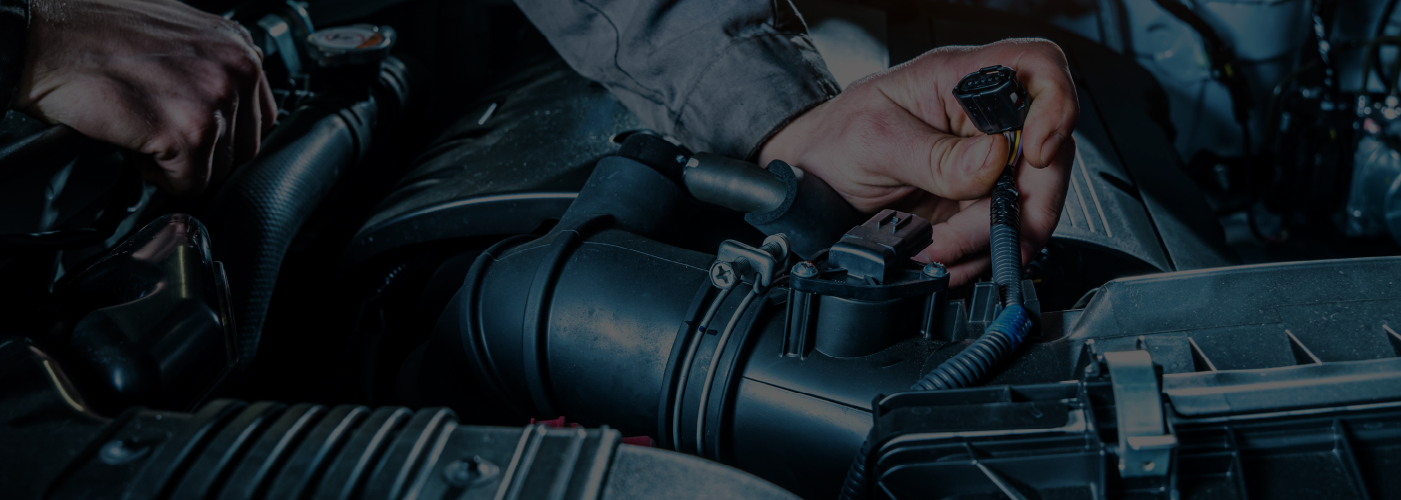The Importance of the MAF Sensor
You probably don’t think much about the Mass Air Flow (MAF) sensor—and honestly, most drivers don’t until there’s a problem. It’s a small part, tucked away in your vehicle’s air intake system, but it has a big job: helping your engine breathe just the right amount of air for smooth performance, great gas mileage, and clean emissions.
When the MAF sensor is working like it should, you don’t notice it at all. But when it gets dirty or starts failing? You might feel sluggish acceleration, rough idling, or even see your check engine light staring back at you.
What Does a MAF Sensor Do?
Your engine needs a precise balance of air and fuel to run well. Too much fuel and it runs “rich,” wasting gas and making your emissions dirtier. Too little fuel and it runs “lean,” which can cause knocking, misfires, and long-term engine damage.
Here’s where the MAF sensor comes in:
- It measures how much air is flowing into your engine.
- It detects the density of that air (since cold, dense air has more oxygen than hot, thin air).
- It sends that info to your car’s computer, so it can calculate exactly how much fuel to inject for the perfect burn.
Think of it as your engine’s personal weather reporter, constantly telling it, “Here’s how much oxygen is coming in right now—adjust the fuel accordingly.”
Types of MAF Sensors
While all MAF sensors do the same basic job, they come in two main designs:
- Hot Wire MAF Sensor – The most common in today’s vehicles. A tiny wire is heated up, and as air flows over it, the wire cools down. The sensor measures how quickly it cools to determine airflow.
- Pros: Extremely accurate, quick response time.
- Cons: Sensitive to dirt and oil buildup.
- Vane Meter MAF Sensor – More common in older vehicles. Uses a spring-loaded flap that moves with incoming air.
- Pros: Sturdy and reliable in simpler systems.
- Cons: Slower and less precise than hot wire sensors.
If you drive anything made in the last 20 years, you almost certainly have a hot wire MAF sensor—and keeping it clean is critical. At Burt Brothers, we have the equipment and expertise to diagnose and service both types.
Signs Your MAF Sensor May Be Failing
If you notice any of these issues, it’s time to schedule MAF sensor cleaning or replacement at Burt Brothers:
- Sluggish acceleration or poor throttle response
- Rough idling or frequent stalling
- Check engine light on (often with airflow-related trouble codes)
- Reduced fuel efficiency and increased exhaust emissions
The good news? If we catch it early, a quick cleaning at Burt Brothers can often fix these symptoms in less than an hour.
How to Check Your MAF Sensor
When you bring your car into Burt Brothers for engine performance diagnostics, here’s how we approach a MAF sensor check:
- Locate the sensor in the air intake system (usually between the air filter and the throttle body).
- Inspect it visually for dirt, dust, or oil buildup.
- Use a diagnostic scanner to see live airflow data while your engine runs.
- Compare readings to manufacturer specifications to confirm accuracy.
If the sensor is dirty but otherwise healthy, we’ll clean it. If it’s damaged or giving erratic readings, we’ll talk to you about an OEM-quality replacement.
How Often Should You Clean or Replace Your MAF Sensor?
We recommend cleaning your MAF sensor every 30,000–50,000 miles as part of regular maintenance. Your driving habits and environment can affect this timeline:
- Dusty roads → more frequent cleaning needed
- Dirty air filter → faster contamination of the MAF sensor
- High-altitude driving → sensor works harder, needs more frequent checks
If cleaning doesn’t solve performance issues, our team can provide OEM-quality MAF sensor replacements to restore proper operation.
MAF Sensor vs. Other Air Intake Components
Your car has a whole network of sensors working together:
- MAP Sensor (Manifold Absolute Pressure) – Measures pressure inside your intake manifold.
- IAT Sensor (Intake Air Temperature) – Measures the temperature of the incoming air.
While these help, the MAF sensor is still the go-to source for actual airflow measurement, which is crucial for modern fuel injection systems.
Step-by-Step Guide: How to Clean a MAF Sensor
Cleaning a MAF sensor sounds simple, but it’s surprisingly easy to damage if you don’t know what you’re doing. Here’s how to do it safely:
- Disconnect the battery and remove the sensor carefully.
- Use a special MAF sensor cleaner spray—never carb cleaner or brake cleaner.
- Hold the spray 6–8 inches away and apply short bursts.
- Let it air dry completely before reinstalling.
- Run a diagnostic check to confirm it’s working properly.
Be careful to avoid common mistakes like touching the delicate wire, over-spraying, or damaging the sensor during removal.
When to Call Burt Brothers for Help
Even after cleaning, a sensor may need replacement if:
- Trouble codes return after service
- Fuel trim data remains outside normal range
- Performance issues persist
At Burt Brothers Tire & Service, we use factory-grade diagnostics to pinpoint the exact cause—whether it’s the MAF sensor itself, a wiring fault, or another intake component.
Benefits of a Healthy MAF Sensor
When your MAF sensor is working correctly, you’ll notice:
- Better fuel economy – Save money at the pump.
- Lower emissions – Do your part for cleaner air.
- Smoother performance – No more sluggish starts or rough idles.
- Longer life for other parts – Protects spark plugs, catalytic converters, and more.
The Burt Brothers Difference
We’re not just about tires—we’re about keeping your whole car running right. With locations across Utah, from Ogden to St. George, our ASE-certified techs know exactly how to keep your MAF sensor (and the rest of your engine) performing at its best.
When you visit us, you get:
- Honest, straightforward advice
- Top-notch parts and equipment
- Service you can trust from a team that’s been keeping Utah drivers safe for decades
Keep Your Engine Breathing Easy
Your MAF sensor may be small, but it’s a big deal for your engine’s health and your wallet. A little maintenance now—like a simple cleaning—can prevent expensive repairs later.
So, if your car feels a little off, your gas mileage has dropped, or your check engine light is on, stop by for a MAF sensor inspection with Burt Brothers today. We’ll make sure your engine can breathe easy and run like new.





